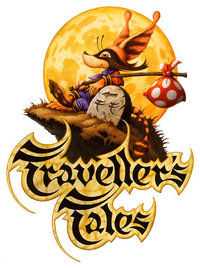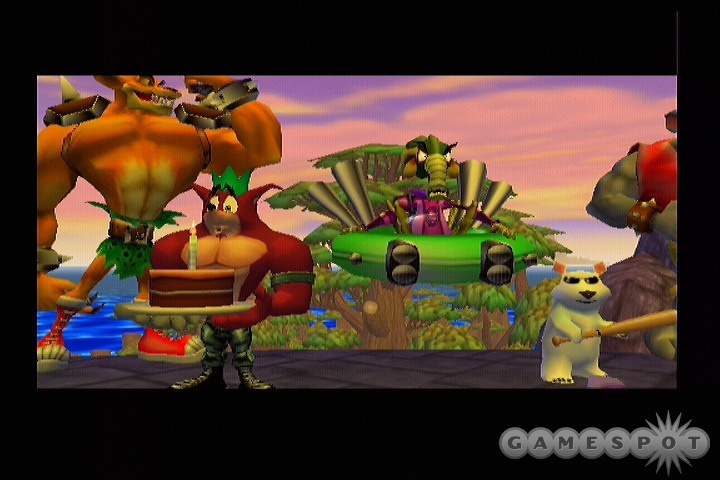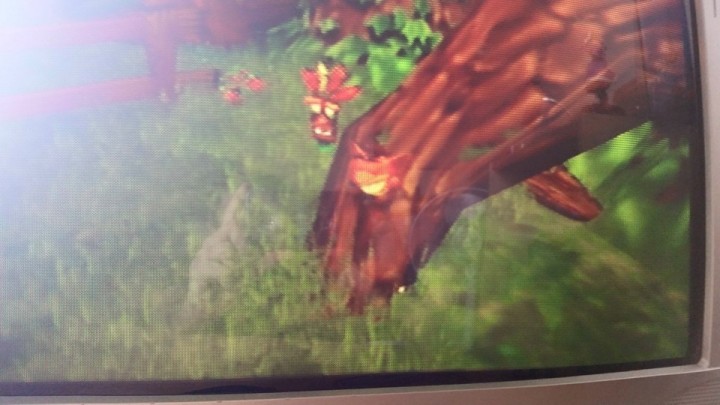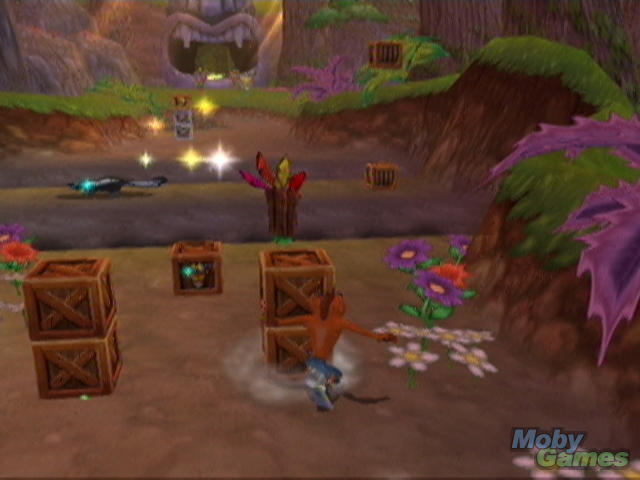“I don’t need to get a life. I’m a gamer. I have lots of lives.”
You’ve probably seen this line circulate the internet a lot. It makes for an easy-to-market t-shirt slogan or meme picture, but at its core, it’s actually a decent representation of the appeal of video games to some. Much like any recreational hobby or medium, video games are played for a variety of reasons. From fun to competition to escapism, video games provide different things for different people. But today, I want to focus on the last part: escapism. Escapism is defined by Merriam-Webster as a, “habitual diversion of the mind to purely imaginative activity or entertainment as an escape from reality or routine”, and perhaps no game captures this aspect quite as well as the phenomenon that is Second Life.
The fantastical aspects of video games lend themselves to wish-fulfillment, the act of being able to be something that you are not. Ever wanted to be the star quarterback in the Super Bowl? Fire up Madden. Want to live in a medieval fantasy world and slay dragons and save villages? Skyrim. You get the point. Video games allow people to experience things they desire on a fantasy level. Do you want to be rich? Do you want to be heroic? Do you want to simply build your own Utopia to reside in? Video games provide a platform for wish fulfillment and fantasy realization.
But what about the mundane? What about basic life? Sure, we have games like The Sims which allow you to partake in normal every-day life, but it still does it on a very directed path. It is still very much an experience built around the constructs of what the game allows. You’re still at the will of the game’s programming. There is a way to “lose” the game. You are given tasks and direction. You’re not really allowed to fully explore all the aspects of life you may wish to experience.
Second Life is a natural expansion on this idea. To provide the player with a way to represent themselves in the construct of a fantasy world, but without the constraints of direction, or the blockades of being grounded in pre-programmed purpose. It’s an unchained version of the usually structured wish-fulfillment aspect of video games on a level that has a profound sociological impact.
WHAT IS SECOND LIFE?
Second Life, released by Linden Lab (who also currently runs the online video game marketplace Desura) in 2003, is, at its most basic, a life simulator. You’re allowed to craft an avatar to represent yourself and then interact with other people’s avatars in massive virtual worlds. Add in a marketplace for buying outfits, objects, and various other things as well as the ability to craft your own worlds or build your own homes, and you have a fully interactive world built entirely around doing what you want without direction.
And when I say “whatever you want”, I mean it. Unlike most online community games, Second Life has opened itself to allowing people to fulfill whatever fantasy they want, regardless of how it is viewed by our real-world society. Sure, you can go to a dance club and dance with your friends, or wander the beaches and forests. But you can also express your sexuality and desires in a surprisingly detailed fashion.
This is where Second Life tends to be turned into a joke by many. Things such as BDSM or Furry fandom are approached with an openness that strike those that don’t understand these things fully as weird or silly. By providing the ability to build your own locations within the game, Second Life allows everyone to have their own niche, their own place to go to. The game allows you to be upfront about what your locations are for, so you don’t accidentally wander into places that make you uncomfortable.
Seeing as the game is fairly well known, as well as often mocked for being strange and uncomfortable, I decided it was time to finally give it a try. So, I sat down with a friend of mine, built an avatar, and we subjected ourselves to a few hours of Second Life to see exactly what kind of range the game actually has. The results were nothing short of staggering, really.
JUST HOW OPEN IS IT?
After getting acclimated with the game’s iffy controls (it was started in 2003, after all) and dealing with server lag, we started experimenting with what the game allowed you to do. Customization of your avatar is surprisingly deep, allowing every tiny detail of your body to be altered, even extending to what is physically impossible in the real world. This allows you to represent your avatar in whatever way you wish, and when you mix in the option to dress and alter your body in any way, you can truly represent yourself in ways that most games with full customization don’t offer. It’s the most diverse avatar creation I’ve ever seen, and this plays to the game’s strengths, which I’ll talk about a bit later.
We explored a few of the worlds, finding dance clubs, fantasy role playing (the D&D type…), and various sexual-specific rooms (accompanied with Adult Only warnings), and were surprised to find exactly what kinds of things you were allowed to interact with and design. Coming across a place that allowed you to pay in-game currency to create painstakingly detailed and realistic customized genitalia for your characters, or purchase body modifications such as piercings, tattoos, etc. Characters could turn themselves into vampires or grow animal-like appendages. All supported through in-game markets.

Those markets are where the game’s economy comes into play. As with many F2P model open worlds, you can use real-world currency to purchase in-game currency, which can then be used at various stores to purchase clothing, objects, and even animations for your avatar. However, unlike something like Playstation Home, these storefronts are not run by Linden Labs. Instead, a lot of these storefronts are actual businesses run by people in real life. You can even purchase storefronts yourself in the game’s various worlds and open your own stores.
The economic side of Second Life is nothing short of mind blowing in its complexity and real-world impact, and when you allow a game to run businesses in a global cyberspace, you run into many issues with international law and things like that. Many issues have come up with selling goods using the game’s in-game currency, even stopping short of in-game banks collapsing and causing economic instability.
Of course, when a game is this large and open, there is plenty of abuse to be had. The community attempts to self-regulate as well as use report features to weed out abuse, but with such a large internet presence, it’s hard to completely escape the negatives that can come with this kind of product. It’s something that definitely has to be approached with caution. There have been many controversies and issues in the past, but Linden Lab does a decent job of addressing these things in an attempt to make this a relatively safe place, for the most part.
WHY IS THIS SO BIG?
How can something like this become such a big deal? With millions of users playing for more than ten years already, and actual in-game businesses sustaining the game’s economy for so long, one has to wonder how this can be a success. Allow me to step in try to explain: Maslow’s Hierarchy of Needs.
For those of you not familiar, Abraham Maslow developed a psychological theory starting in 1943 about human motivation. It’s since become a standard tool for sociological research and understanding. At its most basic, it’s a pyramid of things humans need, starting with physiological needs and ending just short of the “meaning of life”.

For the sake of this conversation, we’re going to be completely skipping Physiological and Safety needs, since they do not apply to a virtual space (a different kind of safety does, but not physical safety) and can’t be fulfilled through Second Life necessarily. We’ll begin our analysis with Love/Belonging and eventually tie the game to self-actualization.
BELONGING
The first important aspect of providing a virtual world where you can do whatever you want is a sense of belonging. With an openness that allows you to express interests and identities that are often mocked or looked down upon, if not completely alienated in real-world society, and to do so with like-minded persons, Second Life provides a place for anyone to feel comfortable and accepted. To not feel like an outcast.
The reason people often turn to mocking certain activities or identities is due to a lack of understanding, or simply feeling uncomfortable. And to be honest, being in a BDSM furry themed room in Second Life can feel a bit jarring. I didn’t quite understand what was happening, I didn’t feel like I belonged there. I felt like an outcast, out of place. Everyone else was communicating and sharing, and I felt like I was completely isolated. It made me realize, on a very basic level at least, what it must feel like for people who are into these kinds of interests when they find themselves in real-world situations where they themselves feel isolated or uncomfortable. As though they don’t belong because everyone around them is different. Now, within the construct of the game I couldn’t possibly experience the full extent of these feelings in real life, but it gave me a sense of why someone would turn to Second Life as a way of expressing things that society pushes to the fringes or treats as alien and unnatural.

Second Life provides a construct for people of any interest to have their own space, a place to connect, a place to be the norm. They’re not outcasts here. They’re not weird or out of place, because this space was built for them and everyone like them. Anyone can find a place where their interests and desires, the things they think and feel and identify with, can be expressed openly and honestly, without fear of being turned away or rejected, laughed at, or even threatened. When you have nowhere in the real world you can turn to, to experience a sense of belonging, you have to find it somewhere else. This obviously doesn’t just apply to sexuality, but all aspects of identity that are shunned or viewed negatively. This is just another way to fulfill the third tier of Maslow’s hierarchy. The section is highlighted as “friends, family, and sexual intimacy” and really, that’s what this provides to some who cannot get it elsewhere.
CONFIDENCE AND RESPECT
Once you’ve established a place to belong, you have to come to terms with who you are and how other people treat you. We’ve already found a place where being exiled or abused can be tossed aside and replaced with acceptance and affection, connection and love. But what of how we feel about ourselves? The Esteem tier of Maslow’s hierarchy mentions “self-esteem, confidence, achievement and respect for and from others” as key needs. These are things Second Life allows through avatar creation.
Avatar creation allows you to be whatever you want. You don’t have to feel restricted to the confines of picking a gender, allowing you to fully project yourself in terms of aesthetic representation. With topics such as gender identity struggling to be properly addressed these days, it’s easy to see the appeal of a welcoming place that allows you to fully represent yourself physically on top of representing your desires and lifestyle choices.
For instance, a transgender person may have trouble with dressing and appearing how they want due to misunderstanding and abuse from others. It’s a common problem, which usually leads to having to “out” themselves first before they can fully dress and appear as they feel, and even that comes with plenty of negative attention from people that don’t understand or respect the individual trying to simply express who they are aesthetically.
Avatar creation is a much less threatening way to start representing yourself properly. It removes the uncomfortable feeling of being referred to by the wrong pronoun, or feeling as though people are not seeing you like you want to be seen. It doesn’t fix the problems with how this is treated in real life, but it at least provides a place to escape to if it’s impossible or too hard at the time to express these things on your actual person, as well as providing a place where you can find support from others like you without worry of abuse or misunderstanding.
I can’t say for sure since I have not experienced these things first hand, but I could see this as a way of building confidence in yourself and how you identify, perhaps making it easier to feel accepted in real life. While we’re still a long way from proper treatment and respect for gender identity issues, this at least provides a start for these people to feel better about who they are without hurtful comments, disrespect, or threats.

THE BEGINNINGS OF SELF-ACTUALIZATION
Morality. Creativity. Spontaneity. Problem Solving. Lack of Prejudice. Acceptance of Facts.
While not all of these are fully explored through Second Life, it does use the previous two tiers of the hierarchy, as well as other aspects of its design to provide a base for which a person can begin the self-actualization process.
Things such as creativity and spontaneity are obviously covered, as the game allows you to build whole worlds, as well as change everything on the fly to represent how you feel or what you wish to be/do at the time. This allows all parts of your self-expression to be realized. We’ve already covered a lack of prejudice in the previous tiers, but how does this build into self-actualization? We’ll have to look at some of Maslow’s defining aspects of a self-actualizer.
Maslow describes self-actualizers as people who are self-reliant, basing themselves on their own personal experiences. Removing the cultural and environmental pressures, they base how they are, and who they are on internalized experience. By removing the real-life societal pressure, Second Life allows one to completely open themselves to their own experience and feelings. By using what we’ve discussed earlier, self-actualization can be realized by removing the shackles of the real world and existing in a space where the self is put first.
Other aspects of self-actualized people are autonomy (this is a no-borders world with no allegiances and authority only to regulate safety), strong interpersonal relationships (which can stem from being able to connect with other avatars over things that otherwise may be hard to fully connect with), and the natural, being true to yourself. A game built entirely around open expression and acceptance allows all of these things to be realized safely, allowing self-actualization that may be hard to come across for some people when held under the societal pressures of the real world.
CONCLUSION
Is Second Life perfect? Far from it. Is it some place that can completely save the world from oppression and help usher in an era of full acceptance and comfort? Probably not. But it does provide a place for anyone and everyone to self-actualize and experience what they need to in order to fulfill their hierarchy of needs, at least a little. You can express who you are, partake in things you may otherwise be shunned for, and do it all while being accepted, and connecting with others to help feel less alone.
Second Life can be whatever you want it to be. If you want it to just be a fun, light-hearted chatroom, it can be that. If you want it to be a place to roleplay or have adventures or create, it can be that as well. But it also holds the ability to be a place for something psychologically fulfilling. While many games can aid in self-actualization, very few can do it on such a large scale with such a meaningful range and acceptance. And while some of it can seem silly or weird, it holds the capacity for a lot of great things as well.
This is a truly open experience for everyone. And having something like that available shows one of the true strengths of the interactive medium.
All pictures compliments of Second Life’s website




























